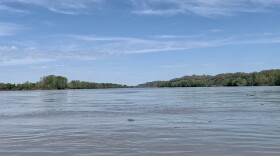-
For nearly a century, the city’s drinking water purification process has taken place with few major hiccups at a lone Briarcliff facility. But KC Water leaders say maintenance costs are climbing and aging concrete is a concern. They’re urging support for a new treatment plant in Kansas City.
-
The program provides a long-term look at water quality in some of Missouri's most famous lakes. It will end in 2027 after a state agency will no longer provide federal funding.
-
State officials say Missouri's current standards, last revised a quarter century ago, are based on outdated science. For small rural communities, it could require major upgrades for water treatment facilities.
-
In dry years, Tuttle Creek Lake and other reservoirs keep the Kansas River flowing strong enough to provide drinking water for hundreds of thousands of people. But these manmade lakes are disappearing.
-
Settlement payments from chemical companies are helping cities pay for expensive PFAS removal technology. But local leaders say the dollars often fall short of covering the full costs to clean up drinking water.
-
A proposed data center caused a public outcry in recent weeks in St. Charles, Missouri, with residents criticizing the secrecy around the project and its potential to contaminate water.
-
Naegleria fowleri lives in warm, fresh water and can enter the brain through the nose, where it causes inflammation and tissue death. Fewer than 200 people have contracted the amoeba since 1962, but infection is almost always fatal.
-
An unknown company is seeking zoning approvals for a 440-acre data center in St. Charles, Missouri, but it's attracted strong opposition from residents worried about their water safety and energy prices.
-
All around Kansas City are lakes and rivers perfect for paddlers. Check out this guide for spots to kayak, paddleboard and canoe, where to rent and buy equipment, and safety tips.
-
The amoeba is a single-celled organism that lives in hot springs, lakes and other warm freshwater bodies. The Missouri health department says this is only the state's third case on record, but infections are nearly always fatal.
-
A recent study found that some beer produced in the U.S. — including in St. Louis — contains PFAS, which are human-made compounds that accumulate in the human body and don't easily degrade. Studies have indicated the presence of PFAS in St. Louis-area water.
-
Local leaders are addressing AI’s impact on water, surveillance, transparency and more. A mostly hands-off approach at the federal level means regulating complex AI issues is–so far–evolving in a patchwork of laws.
Play Live Radio
Next Up:
0:00
0:00
Available On Air Stations











